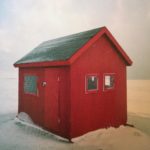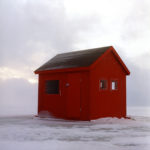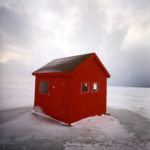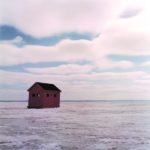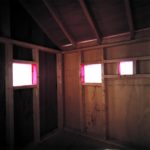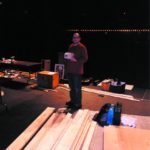Ice Follies 2006
February 18th - March 11th, 2006Frank Shebageget, Indian House, 2006
Materials: Purpose-built ice hut, plywood, wood, and Plexiglas
Frank Shebageget constructed a scale model of this childhood home that was reminiscent of a miniaturized house. Originally from Northwestern Ontario, Shebageget is of Ojibway descent and the home he was raised in was built according to blueprints devised by the Department of Indian and Northern affairs.
Shebageget’s rebuilding of the same house – an earlier work titled “Small Village” included a series of architectural models – returns the structure back to bare essentials; a plywood shell stripped of all adornment and individuality. Painted a deep red, his ice hut reduced the popular North American ideal of ‘home’ to its most fundamental material components.
People may consider it just an Indian house on a reserve, but it also resembles a miner’s home, a house in a forestry town, or a post-war home in an urban centre. The residential home was based on a standard design that was both utilitarian and cost-effective. In the artist’s words: “ I would like to build an Indian house, a “reserve” house, approximately 8×10 or 10×12, a very simple structure, and paint it red.”
Artist Bio:
Frank Shebageget was born in Thunder Bay, Ontario, in 1972 and currently lives in Ottawa, Ontario. Shebageget is of Ojibway heritage. Shebageget’s installations incorporate wood, metal, cement, and hardware materials. Frank Shebageget’s work is in the collections of the Ottawa Art Gallery, Ottawa; Canada Council Art Bank, Ottawa; Dorothy Hoover Library, Ontario College of Art, Toronto; and the Aboriginal Achievement Foundation, Toronto. This First Nations installation and sculptural artist has also worked in artist-run galleries in Ottawa as a curator and arts administrator.
Image Gallery:

